Why does my Panasonic CS-Z20VKR outdoor unit emit water or steam?
- DDonald Reynolds DDSSep 12, 2025
The emission of water or steam from the outdoor unit is due to condensation or evaporation occurring on the pipes.

Why does my Panasonic CS-Z20VKR outdoor unit emit water or steam?
The emission of water or steam from the outdoor unit is due to condensation or evaporation occurring on the pipes.
Why is my Panasonic CS-Z20VKR remote control not working?
If your Panasonic Air Conditioner remote control isn't working, ensure the batteries are inserted correctly. If the display is dim or the transmission signal is weak, try replacing the batteries with new ones.
Why is the TIMER indicator always on on my Panasonic CS-Z20VKR Air Conditioner?
The timer setting repeats daily once set.
Why is my Panasonic CS-Z20VKR making a louder noise at the outdoor unit during early operation of i AUTO-X?
The compressor and fan rotate at a higher speed to boost cooling performance during initial operation.
Why does the POWER indicator blink on my Panasonic CS-Z20VKR before it's switched on?
The blinking POWER indicator is a preliminary step in preparation for operation when the ON timer has been set. When the ON Timer is set, the unit may start earlier (up to 35 minutes) before the actual set time in order to achieve the desired temperature on time.
Why does airflow continue after I stop my Panasonic Air Conditioner?
The airflow continues even after operation has stopped because the unit is extracting remaining heat from the indoor unit, which can take up to 30 seconds.
Why is my Panasonic Air Conditioner making a cracking sound during operation?
The cracking sound during operation is caused by changes in temperature, leading to the expansion or contraction of the unit.
Why does my Panasonic CS-Z20VKR make a water flowing sound during operation?
The water flowing sound you hear during operation is due to the refrigerant flow inside the unit.
Why is there a delay after restarting my Panasonic CS-Z20VKR?
The delay is a protection mechanism for the unit’s compressor.
Why does mist emerge from my Panasonic Air Conditioner indoor unit?
The mist emerging from the indoor unit is a condensation effect due to the cooling process.
| Cooling Capacity | 2.0 kW |
|---|---|
| Heating Capacity | 2.5 kW |
| Power Supply | 220-240 V, 50 Hz |
| Refrigerant | R32 |
| Type | Split System |
Step-by-step guide on how to insert batteries into the remote control.
Instructions for setting the clock on the remote control.
Steps to select operational modes like AUTO, HEAT, COOL, DRY, and i AUTO-X.
Instructions on how to turn the air conditioner on and off.
Guide to adjusting the temperature and switching between °C and °F.
Explanation of warning symbols and general safety advice for operation.
Precautions for safe installation and operation of indoor and outdoor units.
Guidelines for safe use of the power cord and plug to prevent hazards.
Detailed safety precautions for indoor and outdoor units, including water, cleaning, and installation.
Safety advice for remote control use, including battery handling and malfunction.
Precautions regarding power supply disconnection and the nanoe-G generator.
Specific safety guidelines for handling R32 refrigerant during installation and servicing.
Requirements for trained personnel and safe handling practices for flammable refrigerants.
Precautions for piping, installation, and ensuring mechanical connections are accessible.
Safety checks and procedures for servicing, including minimizing ignition risks.
Procedures for checking for refrigerant presence and leak detection equipment.
Requirements for fire extinguishers and avoiding ignition sources during work.
Ensuring adequate ventilation and performing electrical safety checks before operation.
Safety guidelines for repairing sealed and intrinsically safe components.
Checking cabling integrity and detecting flammable refrigerants safely.
Acceptable methods for detecting refrigerant leaks using specific equipment.
Procedure for safely removing and evacuating refrigerant from the system.
Guidelines for refrigerant charging and preventing electrostatic discharge.
Steps for safely decommissioning the unit and recovering refrigerant.
Requirements for recovery equipment, weighing scales, and hoses.
Guidelines for labelling de-commissioned equipment and the refrigerant recovery process.
Instructions for adjusting the direction of airflow using the remote control.
Guide on how to adjust the fan speed and the behavior in AUTO mode.
How to activate Powerful mode for quick cooling and Quiet mode for reduced noise.
Using MILD DRY mode to reduce air dryness and improve comfort.
Using ECO mode to save power consumption at unoccupied rooms.
Using i AUTO-X mode for accelerated room cooling and activity detection.
Activating nanoe X for clean air, skin moisturizing, and odor neutralization.
Instructions for setting ON and OFF timers for the air conditioner.
Detailed explanation of AUTO, HEAT, COOL, DRY, and i AUTO-X operation modes.
Recommended temperature ranges for HEAT and COOL modes to save energy.
How airflow direction is controlled automatically or manually in different modes.
How the unit restarts automatically after a power failure.
Details on using nanoe X for air purification and odor neutralization.
Table of indoor and outdoor operating conditions and temperature ranges.
Instructions for cleaning the indoor unit, including front panel and human activity sensor.
How to wash and dry air filters regularly to maintain optimal performance.
Advice on clearing debris around the outdoor unit and drain pipe.
Explanation of common symptoms that do not necessarily mean the unit is malfunctioning.
Common issues and checks to perform before contacting a service technician.
Troubleshooting steps for a missing or malfunctioning remote control and indicator brightness.
Guidance on inspecting the unit after extended non-use and preparing for storage.
Conditions that require contacting an authorized dealer for service.
Instructions on how to use the remote control to retrieve diagnostic error codes.
List of diagnostic codes and their corresponding abnormality/protection controls.
Information on the collection and disposal of old equipment and batteries according to regulations.
Explanation of symbols related to flammable refrigerants, service personnel, and reading instructions.
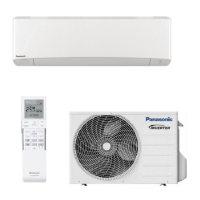



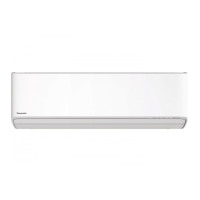
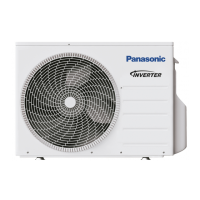



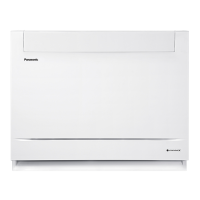
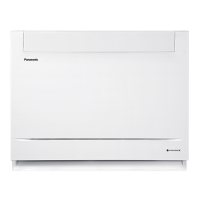
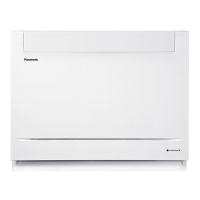
